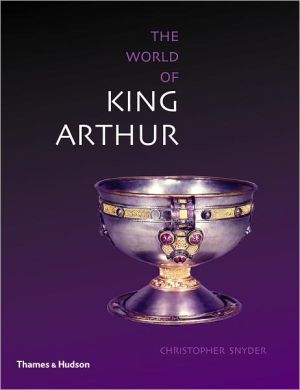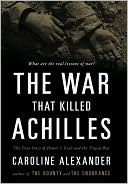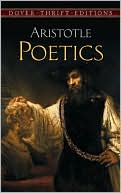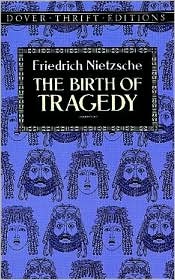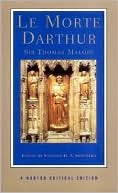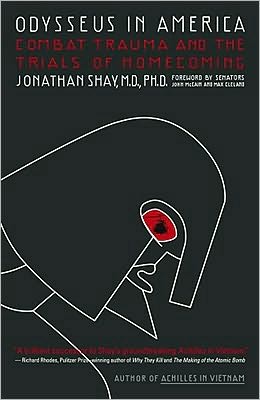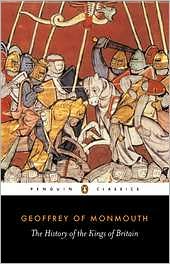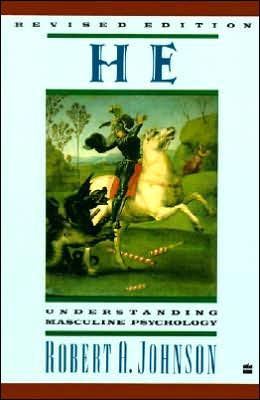The World of King Arthur
King Arthur, Camelot, Excalibur, Merlin, the Holy Grail, Lancelot, and Guinevere—the names conjure up vibrant images of medieval Europe,\ of chivalry, and of romance. But did Arthur really exist, or is Camelot only a dream?\ Christopher Snyder examines the realities and the impact of the Arthurian legends. Medieval texts and archaeological discoveries are used to piece together a picture of the fifth and sixth centuries, when Arthur was believed to have reigned as champion of the Britons....
Search in google:
A beautifully illustrated and informative survey that explores the world of Arthur and the impact of the Arthurian legends on history and the arts.ArthurianaOn any given page, readers will find a feast for the eyes, and for the mind....an important and useful study.
\ \ \ \ \ Chapter One\ \ \ Introduction:\ Who Was\ Arthur?\ \ \ \ In th'olde dayes of the Kyng Arthour, Of which the Britons speken greet honour, Al was this land fulfild of fairye. The elf-queene with her joly compaignye Daunced ful ofte in many a grene mede. This was the olde opinion, as I rede ...\ Geoffrey Chaucer, The Canterbury Tales\ \ \ THUS BEGINS THE famous fourteenth-century tale of the Wife of Bath. Geoffrey Chaucer, like many great writers before and after him, chose to write about Britain in the time of the fabled King Arthur, when the green and pleasant land of the Britons was filled with knights and dancing fairies. This magical age, the `brief, shining moment' of Camelot that inspired Chaucer and Malory, Tennyson and Steinbeck, was Britain in the fifth and sixth centuries AD. Although a somewhat obscure historical period, dismissed by many as the `Dark Ages', this era gave birth not only to the legends of Arthur and Merlin but also to the very real St Patrick.\ `I speke of manye hundred yeres ago,' explains the Wife of Bath. `But now kan no man se none elves mo.' Like the good Wife, I shall here speak of a time many hundreds of years ago (fifteen hundred, to be exact), a time for which historical facts — like elves — have proven quite elusive to modern observers. Thus an air of mystery is lent to the origins of Arthur, appropriate for a ruler whose death in the legends is also enigmatic. But while we cannot answer the ultimate questions about Arthur, we can achieve a better understandingof the historical period which produced, if not the king himself, then the people who believed in him, who sang songs and wrote stories about him, and of the succeeding eras when Arthur became a symbol of Christian rulership, national monarchy and romantic nostalgia.\ \ \ Arthur, Myth and Reality\ \ \ WHO WAS ARTHUR? Well, to begin with, there was not one Arthur, but many. There was an historical Arthur, or, if you prefer, a folkloric or mythological Arthur who came to be mistaken for a living person. There was a literary Arthur, indeed several, and an Arthur portrayed in almost every other artistic medium. There was, and is, a `figure' of Arthur made up of all these elements, who has made a very real impact on history because he has made a very deep impression in the hearts of so many men and women, for more than a thousand years.\ The myth of Arthur and Camelot is one of the most influential in the western tradition. Like all myths it contains truths, though not usually literal ones. The myth begins with the premise that Arthur was a king; not just any king, but an exemplary Christian monarch who displayed both martial and political virtues. The facts are that we do not have records specifically calling Arthur a king until later in the development of his legend, and that the first history in which he appears calls him simply dux bellorum, `leader of battles'. The truth greater than the facts is that Arthur was considered to be a king by most medieval monarchs, who sought to imitate him and even to bring him into their genealogies. To them, Arthur was one of the three great Christian Kings to be celebrated as being among the Nine Worthies (p. 132).\ The myth continues with the specifics that Arthur was ruler of Britain — `King of the Britons' — residing in his many towered castle, Camelot, sometime in the European Middle Ages. Historians who believe in Arthur's existence do indeed see him as some kind of ruler or military official in Britain, though they debate how widespread was his authority and, especially, his dates (estimates have ranged from the second to the seventh centuries AD). As for Camelot, most scholars believe it to have been the invention of a twelfth-century French poet. Archaeologists who have sought Arthur's residence present us with hillforts and military encampments that hardly resemble later medieval castles.\ Another component of the myth is that Arthur had a magical helper named Merlin. Like Arthur, Merlin has many guises. He is prophet, poet, wildman and wizard. Some even claim that he was a Celtic Druid. Facts are few, but there does seem to be evidence of an early medieval figure named Myrddin who was known for his prophetic verse. If he lived, however, it may have been a century later than the historical Arthur, and much of his tradition only became attached to Arthur in the twelfth century and later.\ Arthur also had a beautiful wife, Guinevere, and a mighty champion named Lancelot. Unfortunately, neither name appears in connection with Arthur's until the twelfth century. Guinevere first appears in a pseudo-history, as a noble Roman lady who wed Arthur but later betrayed him in an affair with his nephew, Mordred. Lancelot is introduced in a French romance (though some argue for older, Celtic roots) as the daring young knight who rescues a kidnapped Guinevere and later becomes her lover. The Arthur-Guinevere-Lancelot love-triangle soon became one of the most seductive aspects of the myth.\ Arthur is said to have formed and presided over a gathering of fighting-men known as the Knights of the Round Table. The table itself can still be seen hanging in the Great Hall at Winchester Castle (p. 134). Though Arthur's Dark-Age warriors may have worn mail armour, knights as we know them do not appear until the very end of the first millennium AD. The massive Winchester table could have served a, rather snug, company of twenty-six knights, but experts believe it was constructed much later, probably in the fourteenth century, and repainted by Henry VIII so that his countenance could be given to its depiction of an enthroned Arthur.\ These Knights of the Round Table, according to the myth, went in search of a mysterious object known as the Holy Grail. The first poem describing this object, however, was left unfinished, allowing subsequent continuators to supply their own version of the Grail. In some stories it is the chalice (or a dish) from the Last Supper, containing the Blood of Christ and the mysteries of the Holy Trinity. The young Sir Galahad accomplishes its quest. In other versions it is a magic stone, and Perceval serves as the questing hero. Many scholars see in the Grail Quest elements of pagan Celtic tales. Modern novelists use the quest as a metaphor for psychological epiphanies.\ Finally, goes the myth, the Round Table collapsed through treason and betrayal, and Arthur, mortally wounded, was carried off to the Isle of Avalon, where he will be healed and one day return to rule over Britain. Early records tell of the deaths of Arthur and `Medraut' at the Battle of Camlann in the mid-sixth century, but do not describe the circumstances, nor locate Camlann. Avalon was later identified as Glastonbury, whose Tor was indeed occupied and surrounded by marsh in the early Middle Ages. In the twelfth century, the monks of Glastonbury Abbey claimed to have excavated the grave of Arthur and Guinevere, which was marked by an inscribed lead cross. Though archaeologists have proven that the excavation did take place, the cross (now lost) bore an inscription which was later than sixth-century. Many accuse the monks of constructing a hoax in order to increase pilgrimage revenue.\ It is easy to be cynical about many aspects of the Arthurian myth. It is, after all, both idyllic and idealistic, a utopian dream for romantics and sentimental fools. Such `fools' have included Edmund Spenser, Alfred Tennyson, Winston Churchill, John Steinbeck and John F. Kennedy, not to mention half the British monarchy. I, too, am a fortunate fool ensnared by this myth, but Arthur's spell has led me to serious academic pursuits as well as to enjoyment of fantasy novels. The world of King Arthur is a diverse and pluralistic place, encompassing history, literature, art and politics. No single area gives us the full picture of Camelot, but we can move chronologically through the development of this enduring and endearing myth.\ \ \ Sources of Evidence\ \ \ EXPLORING THE WORLD of King Arthur means tackling a diverse collection of evidence. Written histories, pottery sherds, verse romances, local place-names and modern films may all have something to add to the Arthurian myth. There are also many disciplines involved and different methods of approaching the evidence. An historian and a folklorist, for example, might handle a piece of early medieval literature in very different ways, even if both were trying to answer similar questions about Arthur. It is, moreover, important, in studying Arthur, to understand the type of evidence being used as well as how a particular writer is using it.\ \ \ History\ Professional historians study the past for different reasons, and there are many schools of historical thought. But all historians are taught to place the greatest value on primary sources — that is, written evidence produced by eyewitnesses or at least contemporary witnesses to the events. These can come in many forms — chronicles, formal histories, inscriptions. Unfortunately, we do not have any reliable written source that can claim to be an eyewitness account of Arthur's reign, and contemporary chronicles and inscriptions are quite scarce in Britain during the fifth and sixth centuries AD.\ Any written evidence not contemporary with the events is considered a secondary source. Proponents of an historical Arthur often use poems and chronicles written as much as six centuries after the time Arthur is thought to have lived. This makes many academic historians wary of the whole quest for Arthur. These late sources, however, can be treated as primary sources for the period in which they were composed, therefore telling us something about the way a particular age or group of people viewed Arthur.\ There are also rules for the proper handling of historical evidence. Historians seldom take their sources at face value. An author's background (gender, faith, nationality, profession) may colour the way he or she portrays events. While this holds true for modern as well as ancient authors, Arthurian writers, it seems, have been particularly influenced by their own personal interests or those of their patrons. One must always remember that objectivity (which many believe is impossible for even the modern historian) was not a priority for most ancient and medieval chroniclers.\ \ \ Archaeology\ Archaeology is often considered an objective, scientifically accurate way of answering questions about the past. There would, surely, no longer be any controversy if we just dug up Arthur's bones? Archaeologists would be the first to refute this. While scientific methods are used for excavating, analyzing and dating finds, archaeologists of the Roman and medieval periods have traditionally been influenced by the humanities and usually match their evidence against historical sources. This is lessening, as archaeology matures as an independent discipline, but it is certainly still in evidence for the excavations of many `Arthurian' sites.\ It is seldom the case that a team of excavators unearths a royal grave with concrete identification. Even at Sutton Hoo, the most famous early medieval royal burial in Britain, experts still debate identity and purpose. If graves are found they are usually simple, anonymous burials. Hair, skin, wood, clothing and even bones disintegrate rapidly in the British climate. But coins and pottery survive, and remain our most important means of dating fifth- and sixth-century sites. Anyone seeking the splendour of a pharaoh's treasure in `Arthurian' Britain is likely to be disappointed. Modern archaeology more often tells us about processes and practices than pomp and personality.\ \ \ Literature\ Both historians and archaeologists use literary evidence to help them reconstruct the past. But the modern literary critic is not only interested in historical questions. The form, structure, metre and imagery may be more important in their analysis of an Arthurian poem than determining whether or not Arthur existed. Some literary critics ask questions about a writer's background, others consider such questions irrelevant. Some like to look for comparisons with, and allusions to, other literary works, while others see literary creations as isolated and independent. The literary criticism of an Arthurian work may be completely subjective and idiosyncratic, or the critic may be following a recognizable school of thought (Deconstructivist and Post-colonial, Marxist, Feminist, Jungian, and so on).\ The definition of `text' has also broadened. Latin chronicles, vernacular poetry and modern novels have now been joined by manuscript illustrations, comic books and films. All these types of evidence can be `read' and can tell us something about the way a society, or an individual author, interpreted the Arthurian myth.\ \ \ Mythology and folklore\ Many literary scholars have read medieval Arthurian literature with an eye to its mythological roots. Both classical and Celtic myths have shaped the way later authors characterized Arthurian figures (Gawain, for example, has characteristics of a sun deity) as well as having provided plots and motifs (the quest for the Holy Grail is only the most obvious example). These critics would say that the true power of the Arthurian myth comes from its incorporation of universal themes or archetypes — the hero on the quest, the sacrificial king — which can be found in many of the world's mythologies. Arthur's existence as an historical person may, in this camp, be viewed as irrelevant.\ Others would say that Arthur's existence is indeed relevant, not as an historical figure, but as a figure of folklore. We can better understand a society by exploring the heroes and villains it creates not consciously but corporately: if dozens of megaliths and mountaintops bear Arthur's name, he must have been seen as an important part of the heritage of a particular group of people. Since the names of Arthur, Merlin and Gawain can literally be seen in dozens of places throughout Britain and Brittany (see Gazetteer), the importance of this myth to the Britons and their descendants cannot be easily dismissed.
I Introduction: Who Was Arthur? Arthur, Myth and Reality8 Sources of Evidence12 An Outline History15 Timeline18 II Background: Britons and Romans Prehistoric Britain22 The Iron Age23 The Roman Conquest of Britain26 The Coming of Christianity28 Late Roman Britain29 III The Age of Arthur (AD 400-600) Tyrants and the End of Roman Britain36 The Historical Evidence38 Inscriptions40 The Archaeological Evidence41 The Peoples of Post-Roman Britain46 The Britons47 The Picts54 The Irish57 The Saxons60 IV The Chronicles of the Britons Patrick and Gildas68 The Welsh Annals72 The History of theBritons76 Geoffrey of Monmouth80 V The Legends of the Britons The Pseudo-Chronicles88 The Welsh Tradition92 The Breton Material99 The French Romances101 The Perceval-Grail Tradition110 The Tristan Tradition116 Arthurian Tradition and the Medieval World118 The Late Medieval English Tradition121 VI Monarchy, Chivalry and the Return of Arthur The Plantagenets128 The Tudors and the Stuarts132 The Victorian Revival137 VII The Quest for Camelot The Historical Arthur146 Merlin and Myrddin154 In Search of the Holy Grail158 VIII Conclusion: an Age of Arthur Modern Arthurian Fiction166 Arthurian Films and Television169 Arthurian Music172 The Once and Future King174 Directory of Organizations178 Glossary179 Gazetteer180 Further Reading182 Internet Resources185 Acknowledgments186 Index188 The Story of Arthur The Isle of the Mighty32 The Birth of Arthur64 Arthur, Leader of Battles74 The Knights of the Round Table78 The Beguiling of Merlin90 Lancelot and Guinevere102 The Quest for the Holy Grail108 Tristan and Isolde114 The Lady of Shalott140 The Battle of Camlann152 The Isle of Avalon162
\ ArthurianaOn any given page, readers will find a feast for the eyes, and for the mind....an important and useful study.\ \
